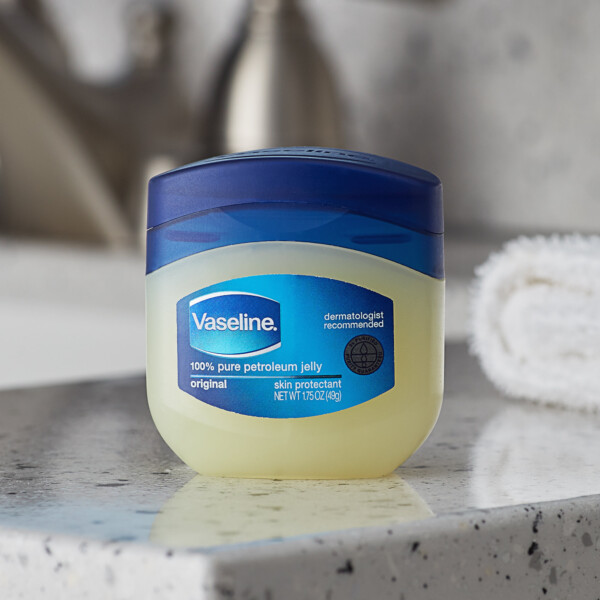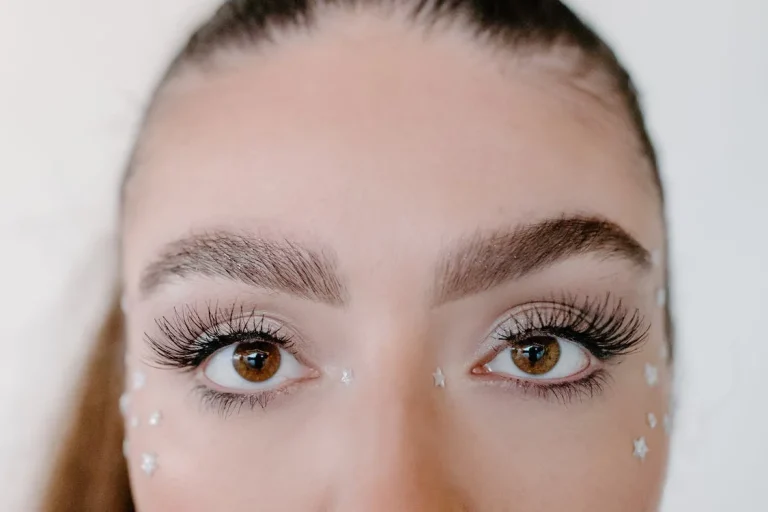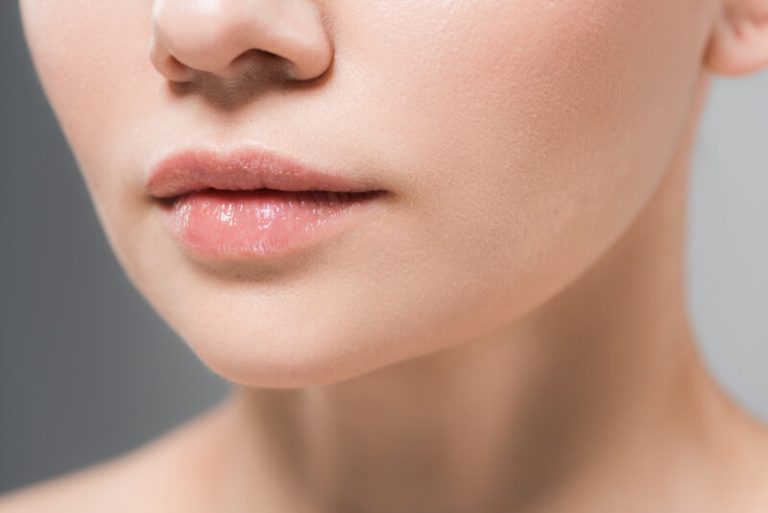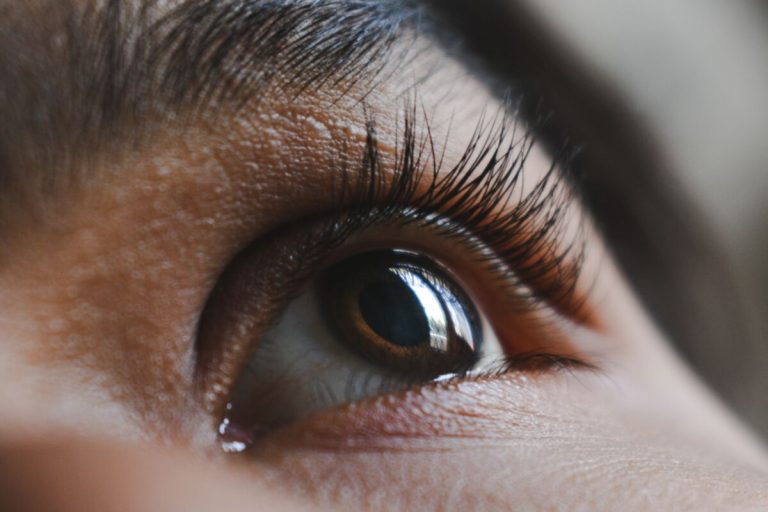Does Vaseline Clog Pores? What Dermatologists Say?
As someone who struggles with dry, sensitive skin, I’m always on the hunt for products that will provide hydration without causing congestion or breakouts. Petroleum jelly has been used for over a century as an occlusive moisturizer, but its pore-clogging potential remains controversial. As a beauty product staple found in medicine cabinets around the world, Vaseline Petroleum Jelly deserves a deeper look.
In this article, we’ll examine the composition and benefits of Vaseline while analyzing concerns about its safety for different skin types. With insights from dermatologists and cosmetic chemists, we’ll uncover the truth about Vaseline’s comedogenic rating and pore-clogging tendencies.
Let’s explore the history and versatility of petroleum jelly and learn application tips to avoid potential issues. Read on to find out if Vaseline can indeed clog pores!
Understanding Pore Clogging
Contents
- Understanding Pore Clogging
- What Is Vaseline Made Of?
- Does Vaseline Clog Pores?
- Is Vaseline Safe For Your Skin?
- How to Apply Vaseline to Avoid Clogged Pores?
- The Benefits of Using Vaseline
- Are There Any Side Effects?
- Tips for Using Vaseline on Your Face
- Can Vaseline Be Used Overnight?
- Should You Use Vaseline On Your Face?
- Does Vaseline Clog Pores? The Verdict
Before analyzing Vaseline’s effects, let’s overview the function of pores and the causes of clogged pores. Pores are small openings on the surface of the skin that serve as pathways for sweat, natural oils, and hair. They play a vital role in regulating body temperature, keeping the skin moisturized, and protecting us from pollutants.
Clogged pores occur when these pathways get blocked with a buildup of excess oil, dead skin cells, and environmental debris. This can lead to enlarged pores, whiteheads, and blackheads. So what factors contribute to clogged pores?
- Excessive sebum production: When oil glands are overstimulated, they go into overdrive, producing sebum. This thick, waxy substance can get backed up in pores.
- Accumulation of dead skin: Shed skin cells and keratin debris can clump together to block pores.
- Bacteria and dirt: Pores congested with dirt, pollutants, and acne-causing bacteria are more likely to get clogged.
Now let’s see how petroleum jelly factors into all this.
What Is Vaseline Made Of?
To understand how Vaseline interacts with skin, we need to look at what gives petroleum jelly its hydrating yet greasy feel. Vaseline’s primary ingredient is petroleum jelly, also known as petrolatum or soft paraffin. Petrolatum is a semi-solid mixture of hydrocarbons derived from petroleum through the distillation of crude oil.
Robert Chesebrough, a scientist, filed a patent for the method to turn crude oil into petroleum jelly in 1872. He discovered that the waxy residue left over from oil drilling formed an effective moisture barrier when applied to the skin.
Chesebrough went on to patent the process for filtering and purifying petroleum jelly into a stable product, creating the Vaseline brand in 1870. Since then, Vaseline has become a medicine cabinet staple prized for its versatility.
Does Vaseline Clog Pores?
Now that we know the origin of Vaseline’s petrolatum base, let’s analyze its reputation regarding pores. There is a common misconception that petroleum jelly is pore-clogging. However, dermatologists have certified Vaseline as non-comedogenic, which means that it does not clog pores.
Petrolatum gets a 0 rating on the comedogenic scale, which measures a product’s likelihood of blocking pores and causing acne. A score of 0 confirms Vaseline will not clog pores for most people.
However, some factors impact how different skin types react to petroleum jelly:
- Dry and sensitive skin – Tend to tolerate and benefit from Vaseline’s occlusive barrier.
- Oily and acne-prone skin – More susceptible to congestion and breakouts from excessive use.
Proper application techniques and avoiding overuse can minimize the risks for pore-clogging.
Is Vaseline Safe For Your Skin?

Now that we know Vaseline does not inherently clog pores, is it still safe to apply to the face? Let’s break down what’s in the formulation.
Petrolatum is non-toxic, hypoallergenic, and contains no harsh chemicals. To be approved for skincare use, petroleum jelly must meet strict purity standards set by the FDA’s United States Pharmacopeia and the European Pharmacopeia.
- Highly refined to remove impurities like carcinogenic polycyclic aromatic hydrocarbons
- Dermatologist-tested to be non-irritating for sensitive skin
- Considered very safe for topical use
Furthermore, petrolatum is scientifically proven to benefit the skin by:
- Moisturizing – Petrolatum seals in hydration by forming a protective barrier on the skin’s surface.
- Protecting – Creates an occlusive layer to shield skin from sun, windburn, and chapping.
- Healing – Soothes and rejuvenates dry, cracked skin and minor cuts.
For most people, Vaseline’s purified petrolatum is non-comedogenic and generally well-tolerated. However, individuals with highly reactive or acneic skin must practice proper application to avoid clogged pores.
How to Apply Vaseline to Avoid Clogged Pores?
When used correctly, vaseline can provide moisturizing benefits without compromising pores. Here are some tips for applying petroleum jelly to prevent congestion:
- Wash skin thoroughly. Remove all dirt, oil, and makeup before applying Vaseline to avoid trapping debris in pores.
- Use only a thin layer. Just a dab of Vaseline is needed to reap the benefits. Using too liberally can lead to clogged pores.
- Avoid acne-prone areas: Limit application to very oily areas like the T-zone if congestion is a concern.
- Remove properly: Gently wash off with a warm washcloth rather than scrubbing aggressively.
- Watch for reactions: Discontinue use if you experience increased clogged pores or breakouts.
Specialized formulas like Vaseline Intensive Care Advanced Repair Lotion provide light moisturization suitable for acne-prone skin without petrolatum. Seek professional guidance if you have doubts about using regular Vaseline.
The Benefits of Using Vaseline
Now that we’ve covered proper usage, let’s explore why pure petroleum jelly remains a beloved skin care product after 150 years. What makes vaseline so versatile and effective?
Protection from Environmental Damage
Petrolatum forms an impenetrable seal over the skin, acting like a protective shield. This prevents moisture loss while locking out irritants.
- Dry air: provides a breathable yet occlusive barrier to retain hydration.
- Cold weather: helps the skin hold on to moisture instead of cracking and chapping.
- Windburn: soothes, moisturizes, and protects sensitive facial skin from harsh winds.
- Sun exposure: offers mild sun protection and soothing relief from burns. Always wear dedicated SPF.
Long-Lasting Skin Hydration
The thick, waxy texture of petroleum jelly adheres to skin longer than lotions or creams. It slows water loss by covering the skin with an airtight protective film.
- Dry and eczema-prone skin – Provides long-lasting hydration to relieve dry, cracked, flaking skin.
- Chronic dryness – Helps conditions like ichthyosis by sealing in moisture after bathing.
- Post-shave – Soothes just-shaved skin and prevents water loss from damaged hair follicles.
Soothing Barrier for Sensitive Skin
The hypoallergenic and fragrance-free purity of medical grade petrolatum is ideal for delicate, reactive skin.
- Skin conditions – Helps seal out irritants that trigger eczema, psoriasis and rosacea flare-ups.
- Rashes and burns – Protects compromised skin from infection while locking in moisture.
- Contact dermatitis – Forms a soothing barrier over inflamed, cracked skin.
Everyday Uses for Vaseline
Aside from skincare perks, petroleum jelly also tackles an array of household tasks. The non-toxic formula makes Vaseline handy for:
- Lip care – Smoothes and softens chapped, dry lips.
- Cuticle cream – Conditions dry, cracked cuticles and nails.
- Makeup remover – Gently breaks down makeup for easy wiping.
- Tattoo aftercare – Helps new ink retain vibrancy by hydrating skin.
- Furniture polish – Buffs wood furniture to a glossy shine.
- Rust prevention – Lubricating layer prevents rust on metal tools.
With so many benefits beyond skincare, it’s easy to see why Vaseline petrolatum jelly is a staple item.
Are There Any Side Effects?
While medical-grade petrolatum is non-toxic, some people may experience minor side effects from improper use of Vaseline:
- Clogged pores – Greasy residue left in pores can lead to congestion and acne. Thorough cleansing and using sparingly minimizes risk.
- Allergic reactions – Petroleum jelly can cause contact dermatitis in those with sensitivities. Discontinue use if irritation occurs.
- Yeast infections – Petrolatum can disrupt vaginal pH balance and cause infection if applied internally. Never insert into body cavities.
Overall, Vaseline is very low-risk when used as directed topically on skin and lips. Discontinue use if any worrisome reactions develop. Seek advice from your dermatologist if you have specific concerns.
Tips for Using Vaseline on Your Face
Looking to add Vaseline to your facial skin care routine? Follow these tips to maximize benefits and avoid potential issues:
Prep Skin First
- Cleanse face thoroughly before applying petroleum jelly. This prevents trapping dirt and oil.
- Exfoliate regularly with a gentle scrub to prevent dead skin cell buildup that can clog pores.
- Apply toner to restore skin’s pH balance and tighten pores.
- Hydrate with a water-based serum packed with nourishing ingredients. This gives Vaseline something hydrating to seal in.
Use Proper Application Techniques
- Opt for a pea-sized amount of Vaseline to avoid using excessively.
- Gently pat and press into skin instead of heavy rubbing.
- Focus application on dry areas like cheeks, avoiding oily zones like nose and forehead if acne-prone.
- Mix a couple drops of facial oil into Vaseline before applying for added nourishment.
Remove Correctly
- Never leave Vaseline on overnight without washing face in the morning.
- Gently massage face with warm water to dissolve petroleum jelly, then cleanse with a mild soap or cleanser.
- Use a soft wash cloth to lightly scrub off residue. Avoid abrasive scrubs or brushes.
- Repeat cleansing until all traces of Vaseline have been removed.
Can Vaseline Be Used Overnight?
Thanks to its intensely occlusive properties, many people use petroleum jelly overnight to maximize moisturization benefits:
- Dry skin – Locks in serums and night creams to hydrate while you sleep.
- Chapped lips – Provides long-lasting balm to relieve cracking and peeling.
- Skin conditions – Seals out allergens and irritants for uninterrupted healing.
Some acne-sufferers practice “slugging” where they coat their entire face with Vaseline before bed. Slugging aims to repair the skin’s moisture barrier overnight.
However, leaving a thick petrolatum film on the skin for extended periods has risks. Pores could get congested with dead skin cells, oil, and debris. To avoid potential breakouts:
- Use the thinnest possible layer that will provide benefits.
- Avoid applying directly to acne lesions or active breakouts.
- Wash off thoroughly in the morning and use caution if acne-prone.
Should You Use Vaseline On Your Face?
When used properly, Vaseline can be safe for the face. However, certain skin types require extra caution:
- Dry, sensitive skin – Ideal candidate for harnessing Vaseline’s moisturizing power!
- Oily, acneic skin – Prone to congestion, only use minimally on dry areas and wash off in morning.
- Eczema, psoriasis – Excellent moisturizing aid over medicated creams, allowing skin to heal.
- Mature skin – Provides hydration without irritating delicate aging skin. Avoid areas with visible pores.
- Normal skin – Use sparingly as an overnight mask for an added moisture surge. Remove thoroughly in morning.
Always patch test Vaseline on a small area of skin first to watch for any negative reactions before full facial application. Introduce slowly while carefully observing how your unique skin responds.
Does Vaseline Clog Pores? The Verdict
After investigating all the nuances around Vaseline and clogged pores, what’s the final verdict?
Vaseline’s purified petroleum jelly is certified non-comedogenic and will not innately clog pores or cause acne. However, improper use and overapplication can lead to congestion in the pores. With careful use, even those with acne-prone skin can reap Vaseline’s hydrating benefits without issue.
Proper skin prep, using only a thin layer, and thoroughly washing off residue are keys to avoiding clogged pores. People with highly reactive or fungal acne may prefer to avoid Vaseline. If you experience increased congestion or breakouts after use, discontinue use. Otherwise, Vaseline can be a safe part of a skin care regimen with careful application.
In the end, there is no definitive yes-or-no answer to “Does Vaseline Clog Pores?” that applies to all skin types. Get to know your skin’s sensitivities through patch testing. Start slowly with a minimal amount and closely observe the effects. Adjust your usage accordingly. With smart application habits, you can unlock Vaseline’s versatile moisturizing superpowers without sacrificing your pores!

Founded by Sophia Rodriguez, IGXO Cosmetics is a PETA-certified, cruelty-free, and vegan makeup brand.





